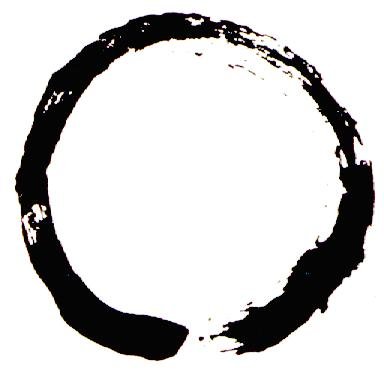 |
| The poster of the summerschool |
dinsdag 26 oktober 2010
Prague revisited (ESS 2010)
zondag 24 oktober 2010
Old Japan 3D 'Meiji'
In the late 19th and early 20th century, enigmatic photographer T. Enami (1859-1929) captured a number of 3D stereoviews depicting life in Meiji-period Japan.
View more of them on this website.
These pictures give a nice atmospheric view of Japan of old at the beginning of the time when modern shakuhachi started to appear. Though the old flutes of before 1859 (Edo flutes) have a specific sound of their own, and some are lyrical about the better ones of that period.
View more of them on this website.
These pictures give a nice atmospheric view of Japan of old at the beginning of the time when modern shakuhachi started to appear. Though the old flutes of before 1859 (Edo flutes) have a specific sound of their own, and some are lyrical about the better ones of that period.
zondag 17 oktober 2010
Online Shakuhachi Community
 |
| A community of 4! ;) |
Kiku Day asked me to be interviewed about my experiences with getting to learn about the shakuhachi and how I see the community.
Kiku is giving demonstrations about online shakuhachi comunnities at a conference at University of Toronto 11 - 14 November 2010.
The conference title is: DIY Citizenship: Critical Making and Social Media. http://diycitizenship.com
She interviews several people with these theme in mind and makes a digital presentation for others to see. She is also giving online Skype lessons at the spot, so if the schedule fits I might be one of the testcases :)
I think as an entity the community can be hard to define, there is no one community. There are many aspects to it: meeting others at local events, at European events, even wordly events (not yet for me), the contact with a teacher, online contacts: facebook, skype, e-mail and of course the shakuhachi BBQ (the international forum). They are all part of the shakuhachi communicty for me. They add in the feeling being connected to a Western part of the shakuhachi playing 'world'. The Japanese community of shakuhachi players is much more farther away, although the tradition has that history breathing through its veines. As it is, the Western community of players and enthousiasts may be even more connected then the Japanese one, which is much more segregated and unfree. I feel that is a nice thing to have here: feel free what to play, what flutes to choose, which teacher to study with and do as you like.
dinsdag 12 oktober 2010
Since the summerschool I have been reading this nice book written by Christopher Blasdel. He was as well at the event and teaching and performing there. A good change to get some material like cd's, and books! He signed it for me, so that is a nice little extra. The book is about his experiences on learning to play the flute and walking the path in Japan and other regions of the world becomming a professional player\ teacher\ performer. I find the personal experiences most interesting to read about. I feel there is a resemblance to discoveries of the flute among players perhaps. Maybe a universal thing? Well my discoveries are minor compared to the road Blasdel has travelled (also litterally). But I enjoyed reading it. The book gives a very nice atmosphere of the time it took place. It is as if you were there 'seeing' it through another pair of eyes\ eares. Well maybe this is an aspect of all books in general, but in this Blasdel has succeeded very well. It is about his experiences but this is not an ego book; you read more about the 'experiencing ego' of the author then about the personal opinion of the author. This makes it easier to get the astmosphere of the time perhaps...A tad more idiosyncratic experiences or emotions like frustrations perhaps would have been nice.
vrijdag 8 oktober 2010
Fundamental practice
***
When words can't describe,
sound can.
The wind blowing gently,
feeling fresh at the lips.
The sound,
slowly buzzing full of warmth,
strong of tone,
devoid of song.
Most fundamental practice.
The basis that is. The power of:
.
Ro Buki
***
maandag 4 oktober 2010
SOLD: Kitahara Seikado 1.8 Jiari
For sale I have this wonderfull flute I originally bought from Perry Yung. It is in excellent condition and plays anything you throw at it. This flute is suitable for lessons. Enough said myself, the original text Perry wrote can tell it alot better:
This is a refurbished authentic TOZAN style 1.8 length shakuhachi made around the 1960s by the renown SEIKADO Company in Kyoto. Seikado is made by three generations the Kitahara family. Very few makers can boast of this kind of prestige in the traditional arts. This one represents one of the highest quality Seikdo offers with three Hanko stamps, one of SEIKADO and two from the top master maker - KOUSAN. It probably originally sold for around $2,000 -3,000. The bamboo is top notch in all aspects. The root ball is absolutely gorgeous. It plays with confidence, great balance from note to note and with a consistent tone color - all attributes of fine shakuhachi instrument as understood by experienced players. When this flute first came to me, it had two cracks, one on the top and one on the bottom section, a chipped utaguchi inlay, loose nakastuki joint and loose rings. Since then everything has been repaired and restored with my Low-Impact approach to maintain it's structural integrity. The cracks were bound by topical black cord and sealed with urushi lacquer. The utaguchi was filled, the joint ring glued and made snug. This is now a great playing shakuhachi and fully functional for serious study of classical shakuhachi music or modern applications. It has the feel of the first wave of very modern flutes crafted with an extreme taper in the bore and a small opening at the bottom end. These flutes have a more back pressure so that the stronger players can blow harder for a bigger sound. They may feel "stuffy" for the beginner. These are made for stronger players who know how to
produce the desired amount of overtone. The sound of this vintage instrument is bright, focused, expansive and complex. An experienced player can play anything on it - Sankyoku, Gaikyoku, Minyo, Honkyoku or anything else. You can see by the finger marks that the previous owner played this flute for long hours on end. this instrument has been thoroughly refurbished and checked for functionality. It has my Tensei Stamp of approval and should not present any problems under normal care of the instrument.
take a listen to
Tamuke
and an improvisation
Price: 990 usd
New Design(s)
 |
| original of old blog header |
Abonneren op:
Posts (Atom)






















